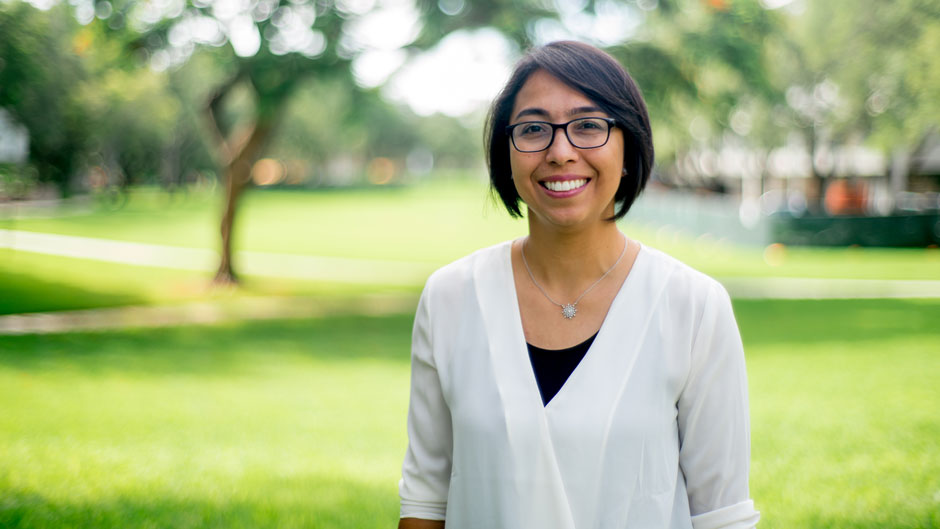The storm’s gale-force winds knocked out electricity to a five-block area of the city. Meanwhile, in a neighboring municipality, the “juice” flowed freely, powering refrigerators, laptops, and desk lamps.
Two cities—one partially enveloped in darkness, the other bathed in light. But what if the electricity that still surged in one could somehow temporarily power the blacked-out sector of the other?
Nurcin Celik, a professor of industrial engineering at the University of Miami and an expert on smart energy systems, is developing the technology that would make such a scenario possible.
As part of her federally funded research, groups of microgrids—local power systems that are connected to a main grid but can operate autonomously when outages occur—would communicate with and make decisions based on the status of each other, providing power to neighboring areas where electricity has been disrupted by a storm or some other catastrophic event.
“Just think of it as running a long extension cord,” Celik said. “Imagine if the University of Miami, the city of Coral Gables, and Coconut Grove all had their own microgrids. If a storm were to knock out power to an area in the Gables, UM’s microgrid could help provide energy for that sector.”
Honored by President Barack Obama in 2017 with a Presidential Early Career Award for Scientists and Engineers, Celik has already conducted extensive research on improving the efficiency and dependability of microgrids operating in “island mode.” But there’s been little work done on getting them to work together to mitigate power outages, she said.
Her new study, which is funded by a three-year, $500,000 grant from the Air Force Office of Scientific Research, is a big step in that direction.
In the College of Engineering’s Simulation and Optimization Research Laboratory, Celik and her team of graduate assistants are developing a framework, including advanced computer simulations and smart decision making algorithms, that will determine how effectively microgrids can interact with and help each other when faced with system abnormalities. They will test their framework on a suite of test beds for benchmarking purposes, incorporating real-world data into their simulations.
George Mason University and the Air Force Institute of Technology are partnering with the University of Miami on the study, with Celik serving as the lead investigator.
With Florida at the epicenter of storm activity, Celik said it is critical that power utilities find a way to lessen the impact of outages that inevitably occur when bad weather strikes. Her study could help, she said, if certain risks are addressed.
“If two microgrids are too close to each other, most likely both would be damaged in a storm,” she explained. “The ideal scenario is if they’re far enough apart not to be damaged by the same storm but close enough to help each other.”
Microgrid establishments and test beds are on the rise, said Celik, primarily because alternative sources like solar panels and wind turbines are now available to power them, whereas in the past, they were mostly operated via fossil fuel generators.
Celik’s work has the potential to save cities millions of dollars. Storms will always occur, damaging a municipality’s main power source. But collaborative microgrid technology can help keep their power systems up and running during times of crisis, she said.

